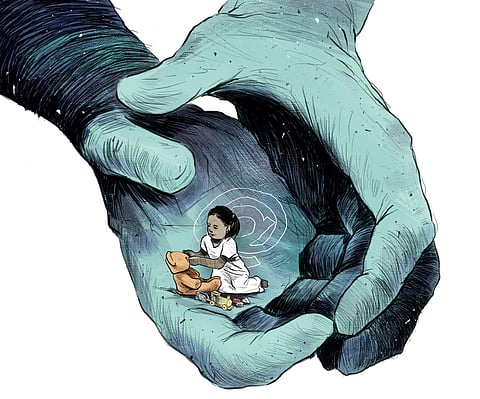

Even as the Supreme Court on Wednesday constituted a committee of representatives to explore technical solutions and block videos of rape and child pornography from being circulated on social media, a married woman from East Champaran district of Bihar filed a complaint against five men of her village who raped her, filmed the incident and circulated the video on WhatsApp. While the discourse over the “rising rape culture” has made significant progress since the infamous Delhi gang-rape of 2012, the discussion about its digital manifestation is minimal and the number of rape and child pornographic videos being shared online only rises.
The SC constituted a committee, including members from the Central government and Internet majors, to explore technical solutions and block videos of such sexual offences in the digital world. The committee, comprising nominees of Google India, Microsoft India, Yahoo India, Facebook and others, have been given 15 days time to come up with a ‘concrete solution’. The court took suo motu cognizance of the issue based on a letter sent by a Hyderabad-based NGO Prajwala. The organisation had also sent two such rape videos that were circulated on WhatsApp. According to media reports, such videos are also sold with the price ranging between Rs 20 and Rs 200.
While experts and activists have welcomed the SC’s action, technical limitations and lack of a sturdy reporting system, they claim, remain issues of concern. Years after internet made its way into homes and phones, India is yet to comprehensively collate data on the prevalence of child pornography. In 2015, only 96 cases of child pornography were reported, which was a whopping 135 per cent increase from the previous year.
However, independent studies peg the numbers to be much higher. A study conducted by ChildLine India Foundation, way back in 2007, claimed that over 48 per cent of children below 12 years of age surveyed admitted to have being photographed nude. Grappling with the issue, the local authorities recently sought the help of the international police agency Interpol to crack down on websites posting such content. Experts claim the biggest challenge in restricting content is that most of it is hosted from other countries.
According to data compiled by UK-based Internet Watch Foundation, only 2 per cent of all child pornography material was produced in Asia in 2015, while a whopping 57 per cent came from North America and 41% from Europe. Activists argue that there is a lack of immediacy in dealing with such cases and taking action. Vidya Reddy of Tulir— Centre for the Prevention and Healing of Child Sexual Abuse cites the example of a case her organisation has been dealing with. “Tulir filed a case in 2015 regarding child abuse images being shared on Facebook. While the pages were taken down and a case was registered, not a single hearing has taken place,” she says. The impact of the content on a ‘disturbed’ audience could lead to further cases of child abuse and violence, say psychologists. “When a psychologically deviant population is exposed to such wild and weird forms of sex through pornography, they crave to imitate the activities they see on-screen,” says noted Kochi-based psychiatrist Dr P N Sureshkumar.